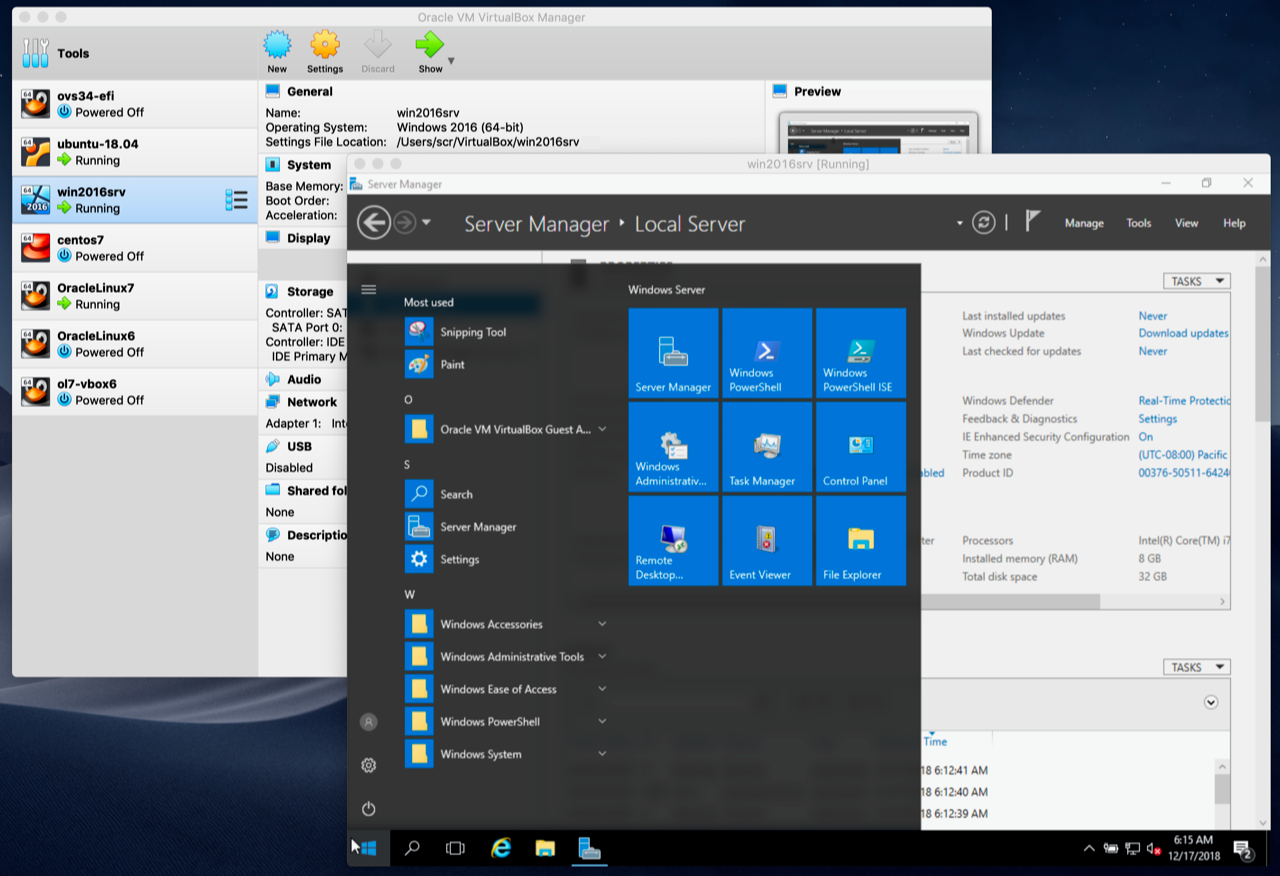
- Vagrant windows vm on mac install#
- Vagrant windows vm on mac windows 10#
- Vagrant windows vm on mac free#
- Vagrant windows vm on mac windows#
Look for the line that reads: # config.vm.network "forwarded_port", guest: 80, host: 8080Īnd add a line directly below that line to read: config.vm.network "forwarded_port", guest: 8888, host: 8888 Since I’m setting this VM up to work with jupyter, I also want to configure port forwarding in the Vagrantfile. If you want to run other flavors of linux or other OS’s, you can find others at. The line should now read: config.vm.box = "ubuntu/xenial64" The Vagrantfile should look something like this: Figure 4: VagrantFile Exampleīefore we go any further, open up your Vagrantfile and change the following line: config.vm.box = "base"Ĭhange “base” to “ubuntu/xenial64” to run Ubuntu 16.04. This will allow you to set the configuration of your virtual machine and Vagrant. This will create a Vagrantfile in the directory you’re in. Now, initialize your vagrant project by typing: vagrant init At the Bash command line, change into the directory you want to work from and type “mkdir vagrant_project” (or whatever name you want to use). I generally use vagrant in this way to run jupyter, so I’ll walk you through setting things up for jupyter, pandas, etc.įirst, set up a directory for your project. Setting up Vagrant on Windowsįor those of you that haven’t used Vagrant in the past, here’s how I set it up and use it. Figure 3: Git Bashįrom this point, you can do your ‘vagrant init’, ‘vagrant up’ and ‘vagrant ssh’ to initialize, create and ssh into your vagrant machine. You should see a window similar to Figure 3. Now that git (and bash) is installed, you can launch Git Bash to start working with Vagrant. Figure 2: Configuring your terminal emulatorĭuring the remainder of the installation, I left the rest of the options at the defaults.
Vagrant windows vm on mac windows#
If you are going to be doing a lot of interactive python work in the console, you might want to select the 2nd option to use the windows default console window.

I selected and use the MinTTY option because it gives me a much more *nix feel. I do not use git from the windows command line though…I use a git GUI along with git from the command line within my virtual environment.Īnother screen to consider is the “Configuring the terminal emulator…” screen (figure 2). I selected the third option when installing git. On the “adjusting your path” section (see figure 1), you’ll need to think about how you want to use git on the command line. There is one ‘gotcha’ when installing git that you should be aware of. If you want to use other git applications, you can uncheck the “associate. While installing Git, I recommend leaving everything checked on the ‘select’ components window if you don’t currently have any git applications installed. At the time of writing, I’m using Git 2.11.0.

Vagrant windows vm on mac install#
Jump over and download git for your machine and install it. You could use putty or CygWin or any other emulator, but I’ve found Git’s bash to be the easiest and simplest to install and use. I use Git’s “bash” to interface with my virtual machines and Vagrant. To really use the Vagrant and the linux virtual machine, you’ll need to download a *nix emulator to allow you to do the things you need to with vagrant.
Vagrant windows vm on mac free#
I am using Vagrant 1.90 and Virtualbox 5.1.10 at the time of this post.įeel free to ‘run’ either of the programs, but there’s no need to enter either program just yet. To get started, you’ll need to download and install Vagrant and Virtualbox for your machine. That said, it can work for those types of development efforts if you configure your virtual machine with enough RAM and processors. One Caveat: if you’re doing processor / memory intensive development with python, this may not be the best option for you. You can use other products like VMWare’s virtual machine platform, but Virtualbox is free and does a good enough job for day-to-day development.1 I have and do use Canopy and/or Anaconda but I’ve recently moved the majority of my python development on Windows into Linux (Ubuntu) virtual machines using Vagrant and Virtualbox.

Vagrant windows vm on mac windows 10#
While I use a mac or the majority of my development, I do find myself using Windows 10 more and more, and may be moving to a Windows machine in the future for my day-to-day laptop. My current recommendation is to use Vagrant on Windows combined with Virtualbox to virtualize your development environment. You can install Canopy or Anaconda to have an entire python ecosystem self-contained or you can install python directly onto your machine and configure all the bits and bytes yourself. There are many different ways to install python and work with python on Windows.


 0 kommentar(er)
0 kommentar(er)
